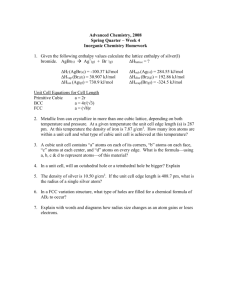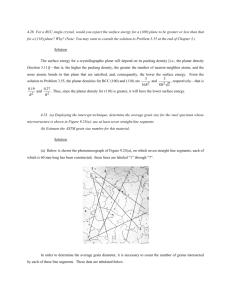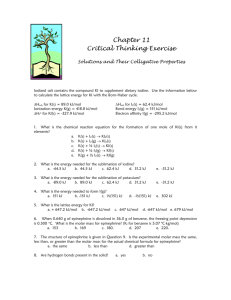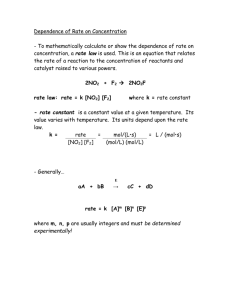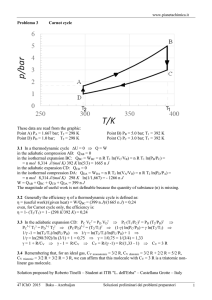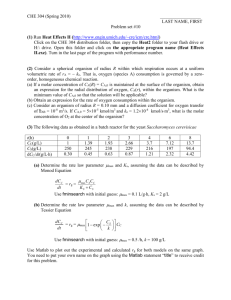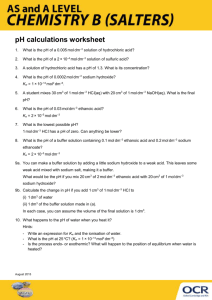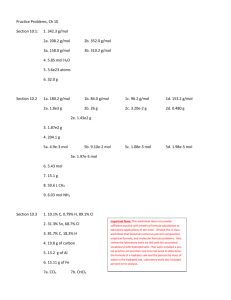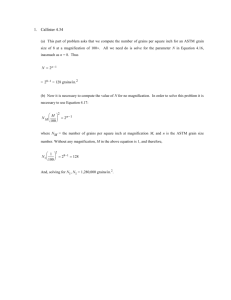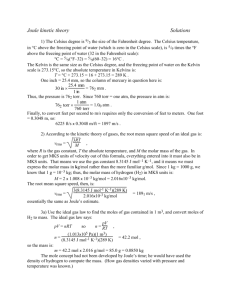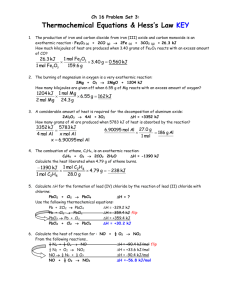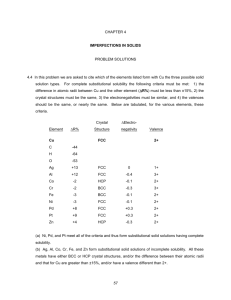SOLUTION_ASSIGNMENT_CHAPTER 4_V2
advertisement
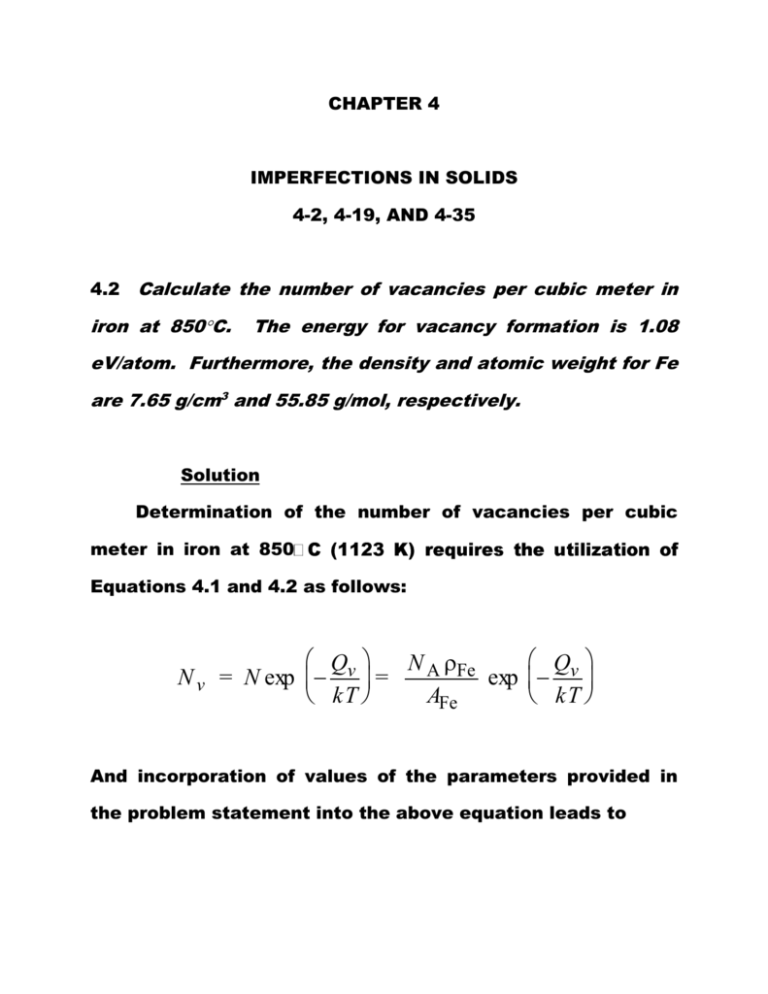
CHAPTER 4 IMPERFECTIONS IN SOLIDS 4-2, 4-19, AND 4-35 4.2 Calculate the number of vacancies per cubic meter in iron at 850C. The energy for vacancy formation is 1.08 eV/atom. Furthermore, the density and atomic weight for Fe are 7.65 g/cm3 and 55.85 g/mol, respectively. Solution Determination of the number of vacancies per cubic meter in iron at 850 Equations 4.1 and 4.2 as follows: Q N A Fe Q N v = N exp v = exp v kT kT AFe And incorporation of values of the parameters provided in the problem statement into the above equation leads to Nv = (6.022 10 23atoms / mol)(7.65 g / cm3) exp 55.85 g / mol (8.62 10 5 = 1.18 1018 cm-3 = 1.18 1024 m-3 4.8 What is the composition, in weight percent, of an alloy that consists of 6 at% Pb and 94 at% Sn? Solution In order to compute composition, in weight percent, of a 6 at% Pb-94 at% Sn alloy, we employ Equation 4.7 as CPb = = ' A CPb Pb C' Pb APb 100 Sn ASn (6)(207.2 g / mol) 100 (6)(207.2 g / mol) (94)(118.71 g / mol) = 10.0 wt% CSn = C' = ' A CSn Sn C' Pb APb C' 100 Sn ASn (94)(118.71 g / mol) 100 (6)(207.2 g / mol) (94)(118.71 g / mol) = 90.0 wt% For a solid solution consisting of two elements 4.19 (designated as 1 and 2), sometimes it is desirable to determine the number of atoms per cubic centimeter of one element in a solid solution, N1, given the concentration of that element specified in weight percent, C1. This computation is possible using the following expression: N1 N A C1 C1 A1 A 1 100 C1 1 2 (4.18) where NA = Avogadro’s number ρ1 and ρ2 = densities of the two elements A1 = the atomic weight of element 1 Derive Equation 4.18 using Equation 4.2 and expressions contained in Section 4.4. Solution This problem asks that we derive Equation 4.18, using other equations given in the chapter. The concentration of component 1 in atom percent (C1' ) is just 100 c1' where atom fraction of component 1. Furthermore, c1' c1' is the is defined as = N1/N where N1 and N are, respectively, the number of c1' atoms of component 1 and total number of atoms per cubic centimeter. Thus, from the above discussion the following holds: N1 = C1' N 100 Substitution into this expression of the appropriate form of N from Equation 4.2 yields C1' N A ave N1 = 100 Aave And, finally, substitution into this equation expressions for ' C1 ave (Equation 4.10a), Aave (Equation 4.11a), and realizing that C2 = (C1 – 100), and after some algebraic manipulation we obtain the desired expression: N1 = N AC1 C1 A1 1 A1 2 (100 C1) 4.35 Determine the ASTM grain size number if 25 grains per square inch are measured at a magnification of 600. Solution This problem asks that we determine the ASTM grain size number if 25 grains per square inch are measured at a magnification of 600. In order to solve this problem we make use of Equation 4.17: 2 M N M 2n 1 100 where NM = the number of grains per square inch at magnification M, and n is the ASTM grain size number. Solving the above equation for n, and realizing that NM = 25, while M = 600, we have M log N M 2 log 100 n 1 log 2 600 log 25 2 log 100 110.8 log 2



